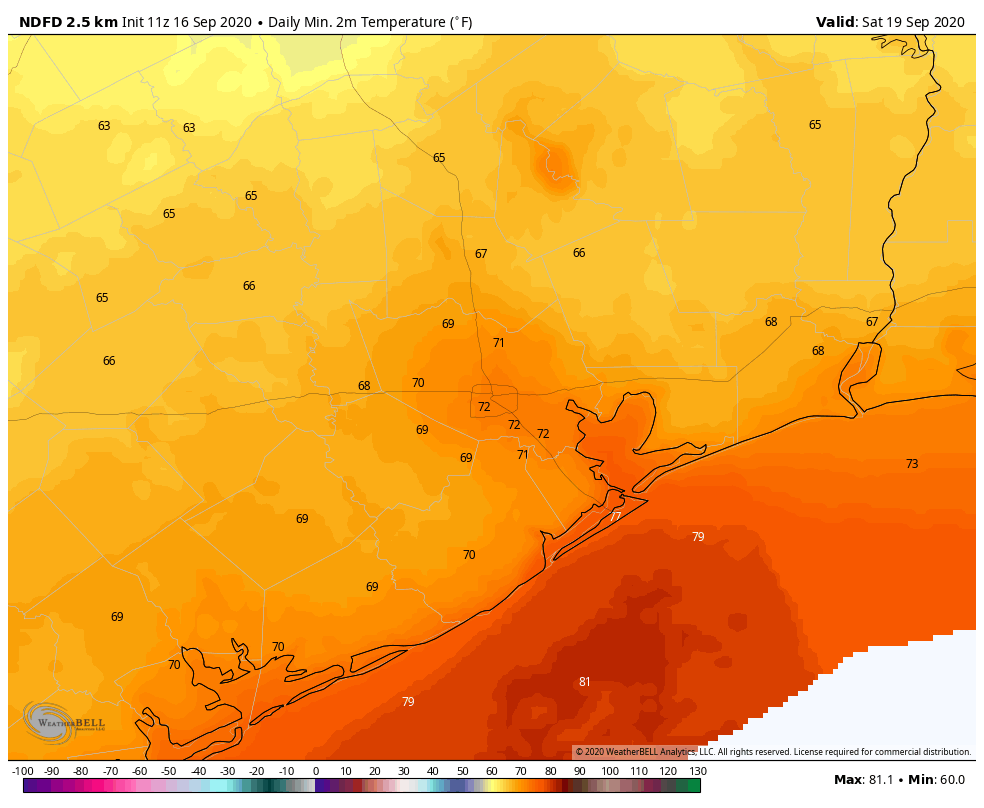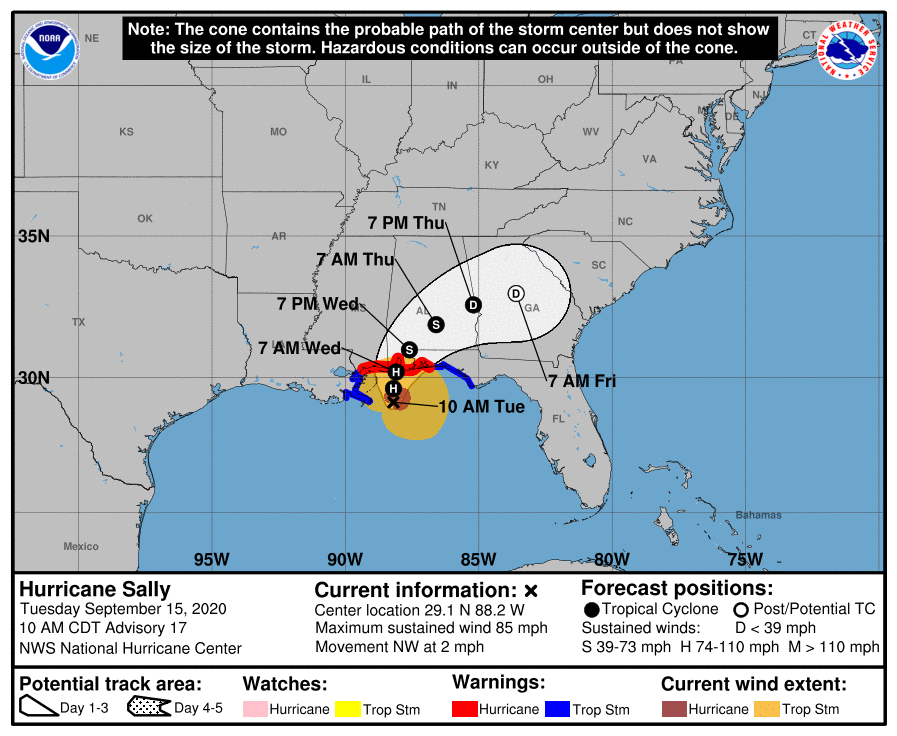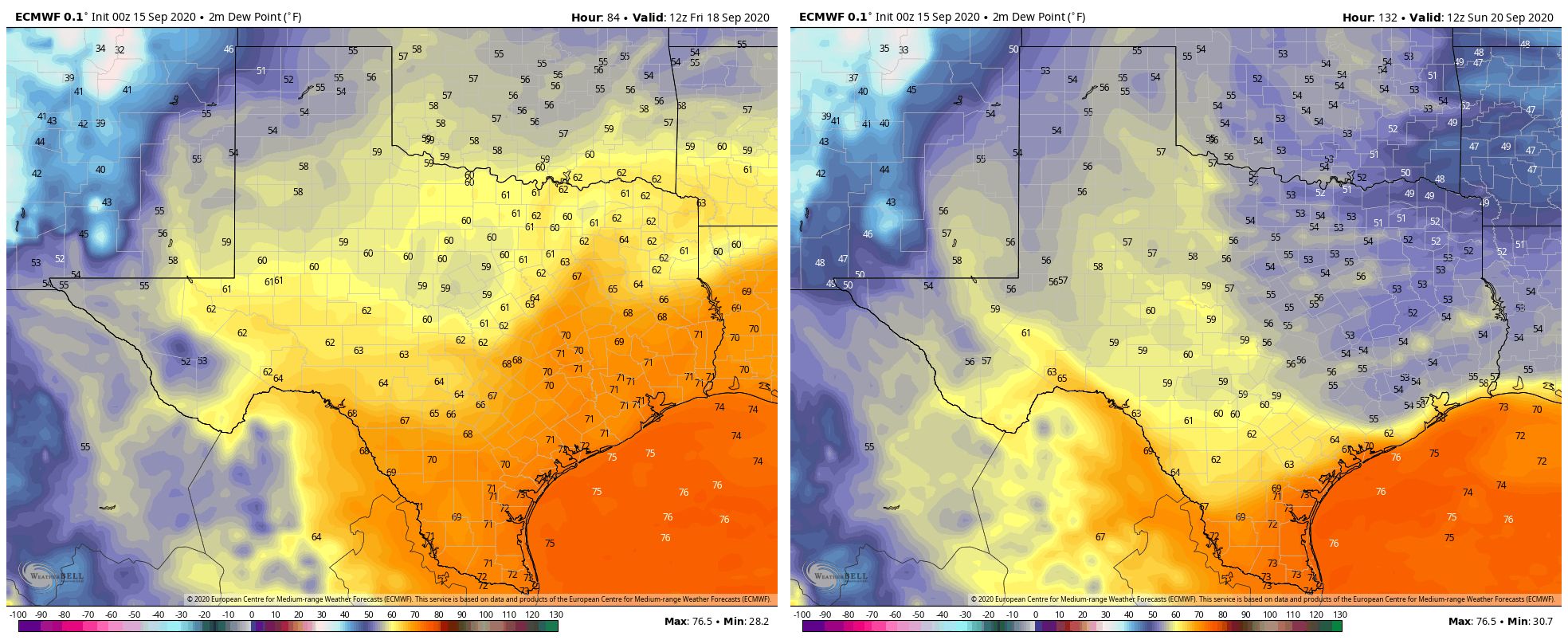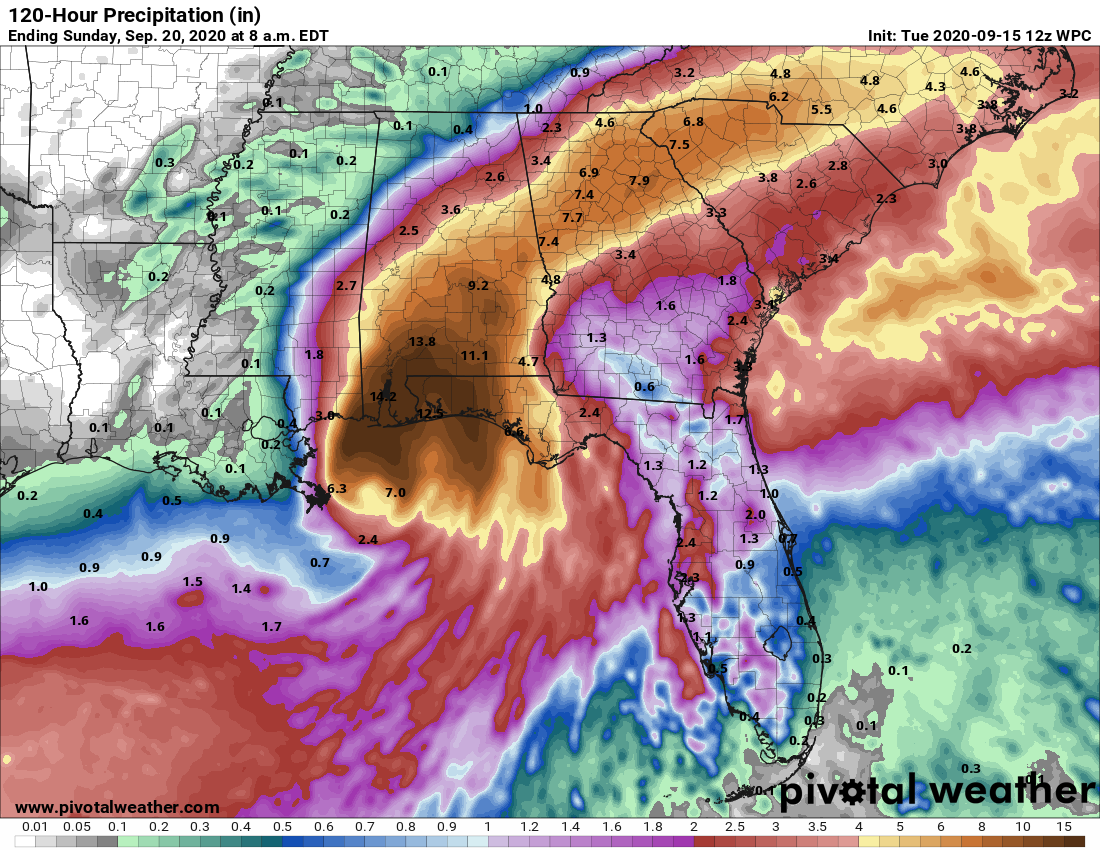Good morning. We’re continuing to anticipate the arrival of a cool front late on Friday or Saturday morning, which should make for a rather pleasant early fall weekend across the region. It won’t exactly be cold, but it sure will be less humid. Meanwhile, we’re also anticipating the formation of a tropical storm or depression in the Southern Gulf of Mexico fairly soon—this will have to be watched closely but the forecast for now mostly keeps inclement weather out of the Houston region. More on this below.
Thursday
The really hot weather is almost over, we promise. And it has been hot. Both Hobby Airport and Galveston again tied heat records on Wednesday with highs of 96 degrees. Temperatures should be about 5 degrees cooler today with partly cloudy skies, and rain chances of 30 percent or so. These rain chances will be driven by an upper-level low pressure system and enhanced by daytime heating. Low temperatures tonight will be in the mid-70s for most.
Friday and Friday night
Friday should be similar to Thursday in terms of sensible weather, but things should begin to change late Friday night or Saturday morning. As Matt wrote yesterday, this will not be a knock-you-off-your-feet front blowing in from the northwest, but rather over the weekend we’ll gradually see drier air moving in. This should become noticeable on Saturday morning.
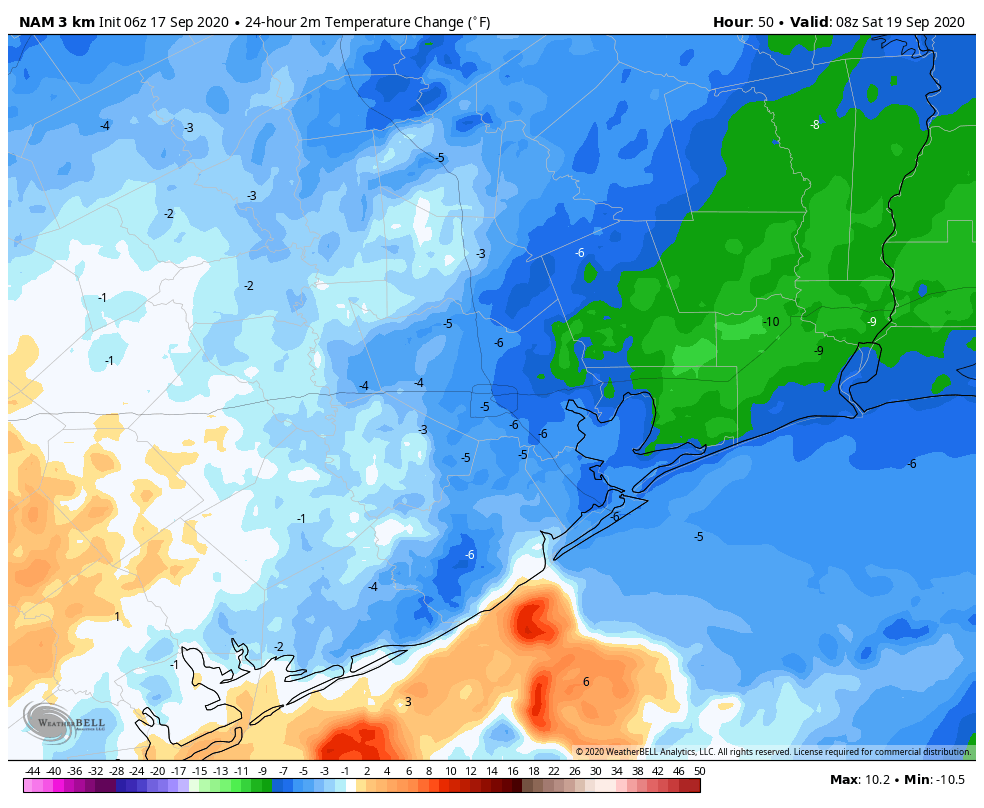
Saturday and Sunday
This will leave us with a pleasant weekend. Right now I’d peg highs in the upper 80s, with mostly sunny skies, for most of us. With lower dewpoints, these temperatures will feel much more comfortable. Low temperatures should get into the mid- to upper-60s on Saturday and Sunday mornings, except for the coast, which will stay a bit warmer. So clearly not cold, but after months and months of summer, the difference in humidity will be notable. Enjoy this taste of fall for a few days Houston, you’ve earned it.

